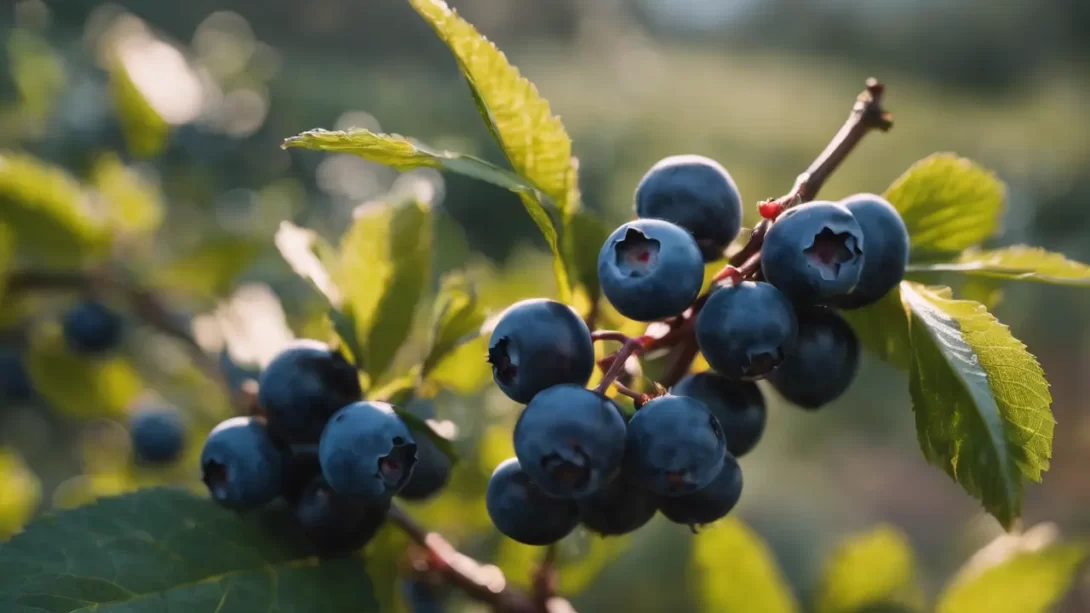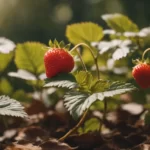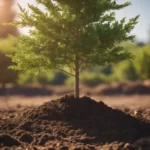Huckleberries are small, round berries, often found in the wild, particularly in North America. Belonging to the plant family Ericaceae, they hold a significant place in various regional cuisines and cultures. This article aims to provide a comprehensive description of huckleberries, helping readers to identify them accurately in nature.
Huckleberries
Huckleberries, while often confused with blueberries, are a distinct group of berries within the botanical family Ericaceae. They encompass several species, with the most common being from the genus Vaccinium and Gaylussacia. Known for their robust flavor, huckleberries have been valued for centuries in native diets and traditions, especially in the Pacific Northwest of the United States.
Physical Characteristics of Huckleberries
Huckleberry plants exhibit unique characteristics that set them apart from other berry plants. Understanding these can help in correctly identifying them.
Leaves
- Huckleberry leaves are typically small and oval-shaped, with a smooth or slightly toothed margin. They are generally a vibrant green color, which can turn reddish in the fall.
- The leaves are arranged alternately along the stems, giving the plant a bushy appearance.
Stems and Growth Pattern
- Huckleberry plants can vary in size, but most species are compact and bushy, growing anywhere from 2 to 6 feet tall.
- The stems are typically woody and branch out extensively, providing a sturdy base for the leaves and fruits.
Flowers
- The flowers of huckleberry plants are small and bell-shaped, often appearing in hues of pink, red, or white.
- They bloom in the early spring to summer, depending on the species and location.
Huckleberry Fruits
- The most distinctive feature of huckleberries is their fruit. These berries are small, typically measuring about 5-10 millimeters in diameter.
- Huckleberries come in a variety of colors, including deep purple, red, and even black. The specific color can be an indicator of the particular species.
Color and Size
- Huckleberry fruits exhibit a range of colors. The most common are deep purple or blue-black, but some species produce red or even black berries. The color often deepens as the berry matures.
- The size of huckleberries can vary slightly between species, but they generally remain small, about the size of a large pea. This size, combined with their color, makes them distinguishable from larger fruits like blueberries.
Texture and Taste
- The texture of huckleberries is somewhat firm with a skin that’s thicker than that of a blueberry. Inside, the flesh is juicy and contains small, unobtrusive seeds.
- In terms of taste, huckleberries are often more tart than blueberries, with a complex flavor profile that can vary from sweet to tangy. This makes them a favorite for culinary uses, from jams and pies to savory sauces.
Habitat and Growing Conditions
- Huckleberries are typically found in forested areas, often in acidic and well-drained soils. They are commonly seen in mountainous regions and thrive in both full sun and partial shade.
- These plants prefer cooler climates and are commonly found in the Pacific Northwest, though some species are also native to the southeastern United States and other regions.
Tips for Identifying Huckleberries
Identifying huckleberries in the wild requires careful observation:
- Look for the Distinctive Leaves: Small, oval, and alternately arranged along the branch.
- Examine the Flowers: Small, bell-shaped flowers in spring can indicate a huckleberry plant.
- Observe the Berry Color and Size: Small, round berries in shades of purple, red, or black.
- Consider the Habitat: Huckleberries are often found in forested, mountainous regions.
It’s important to exercise caution and ensure accurate identification, as some berries that look similar to huckleberries can be toxic.
Conclusion
Huckleberries are a unique and flavorful addition to the natural landscape, offering both ecological benefits and culinary delights. Recognizing these berries involves noting their small, round shape, the range of colors from deep purple to red or black, and their slightly tart taste. The plant itself, with its distinctive small, oval leaves, bell-shaped flowers, and compact, bushy growth pattern, can be identified in forested, mountainous regions, often thriving in acidic, well-drained soils.
Foraging for huckleberries can be a rewarding activity, but it’s crucial to be certain of identification. Misidentifying berries in the wild can lead to unpleasant or even dangerous consequences, as some berries that resemble huckleberries are toxic. When in doubt, consulting a local expert or using a reliable field guide is advisable.
In addition to their appeal to foragers and chefs, huckleberries play a significant role in their ecosystems. They provide food for a variety of wildlife, including birds and mammals, and contribute to the biodiversity of their habitats. In the culinary world, huckleberries are celebrated for their vibrant flavor and are used in a multitude of recipes, from sweet desserts to savory dishes.
In summary, understanding the appearance and growth habits of huckleberries is essential for anyone interested in foraging, gardening, or simply appreciating the diversity of nature. These small but mighty berries are a testament to the richness of the natural world and the joys it offers to those who take the time to explore and understand it.




